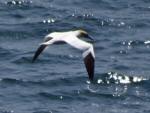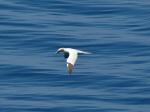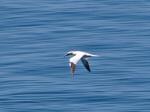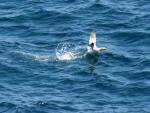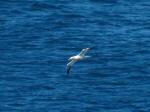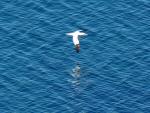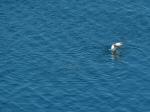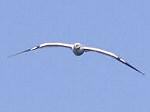Latin name - Morus bassanus
Actually the Gannet seen around our coasts is the Northern Gannet. The
Gannet is larger than any gull reaching a length of between 87 to 100cm
with a wingspan of up to 180cm. Both sexes are similar in appearance -
white with black wing-tips and yellow on the back of the head. Young birds
are dark brown in their first year, and gradually acquire more white in
subsequent seasons until they reach maturity after five years. They do
not breed until they are 5 or 6 with adult birds often living to 20 years
or more. Gannets have long pointed bodies, wings, tails and even beaks.
They feed by plunge-diving for fish, diving into the sea from height at
great speeds (up to 100 km per hour). Their breeding range is the North
Atlantic but they are migratory birds with most wintering at sea, heading
further south in the Atlantic. They normally nest in large colonies, on
cliffs overlooking the ocean or on small rocky islands. Best place we
have found to observe Gannets in our part of the world is from the headlands
of Cornwall. |
